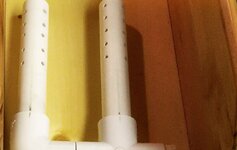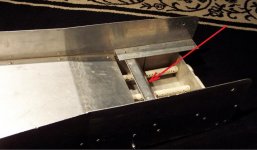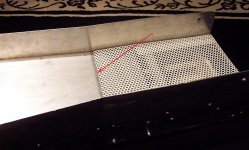go4thegold
Greenie
- May 14, 2014
- 12
- 9
- Primary Interest:
- Prospecting
I'm currently building a gold trap box.
My only problem has been that I haven't been able to get a picture of the end of the box itself. (where the trap is)
I've been wanting to see a picture of the overflow cutout/ exit side. If you've made your own or have a bazooka I would love a picture.
My box is made of sheet metal and it's turning out pretty good. I will be adding pvc pipes to the gold trap to keep a steady stream of water coming in to keep the material in a liquefied state.
Pictures to come of it soon.
Thanks!
My only problem has been that I haven't been able to get a picture of the end of the box itself. (where the trap is)
I've been wanting to see a picture of the overflow cutout/ exit side. If you've made your own or have a bazooka I would love a picture.

My box is made of sheet metal and it's turning out pretty good. I will be adding pvc pipes to the gold trap to keep a steady stream of water coming in to keep the material in a liquefied state.
Pictures to come of it soon.
Thanks!
Amazon Forum Fav 👍
Upvote
0






